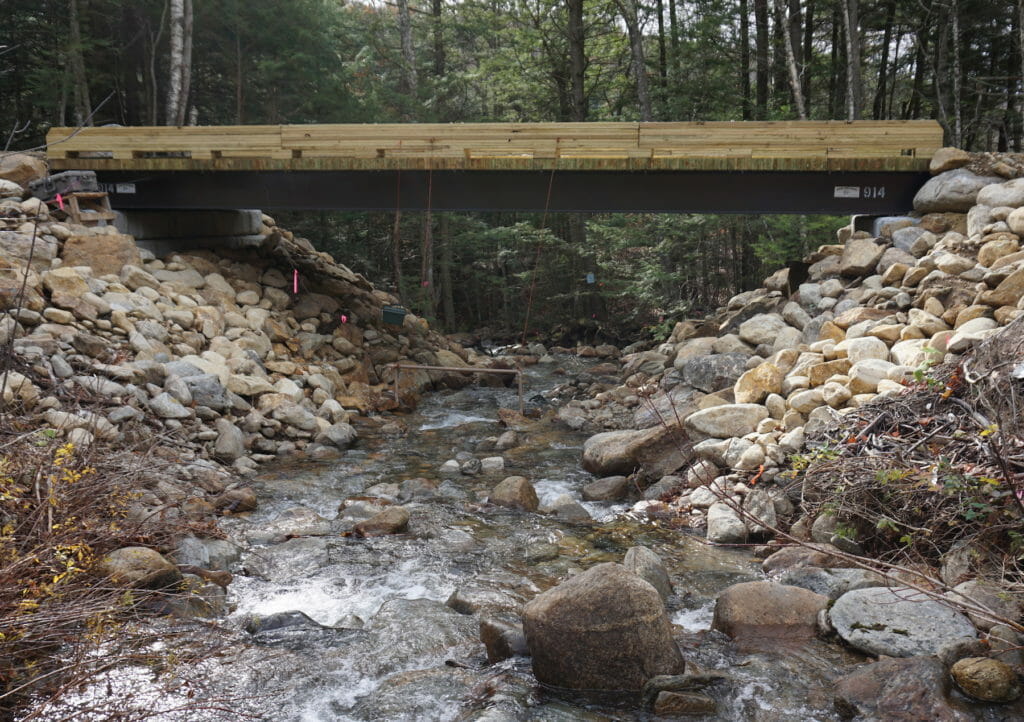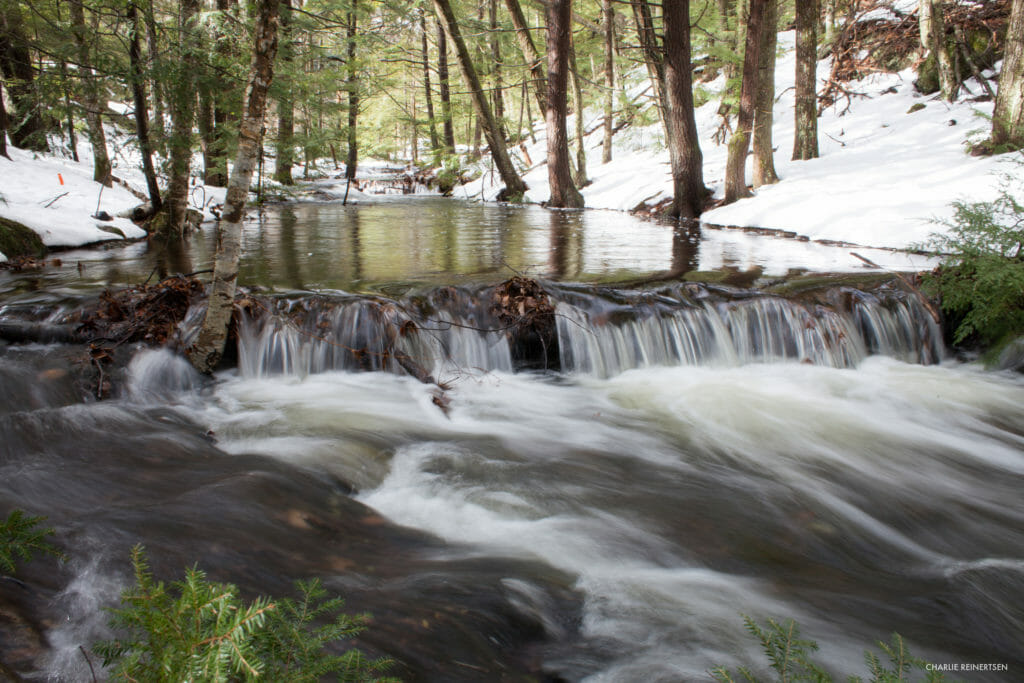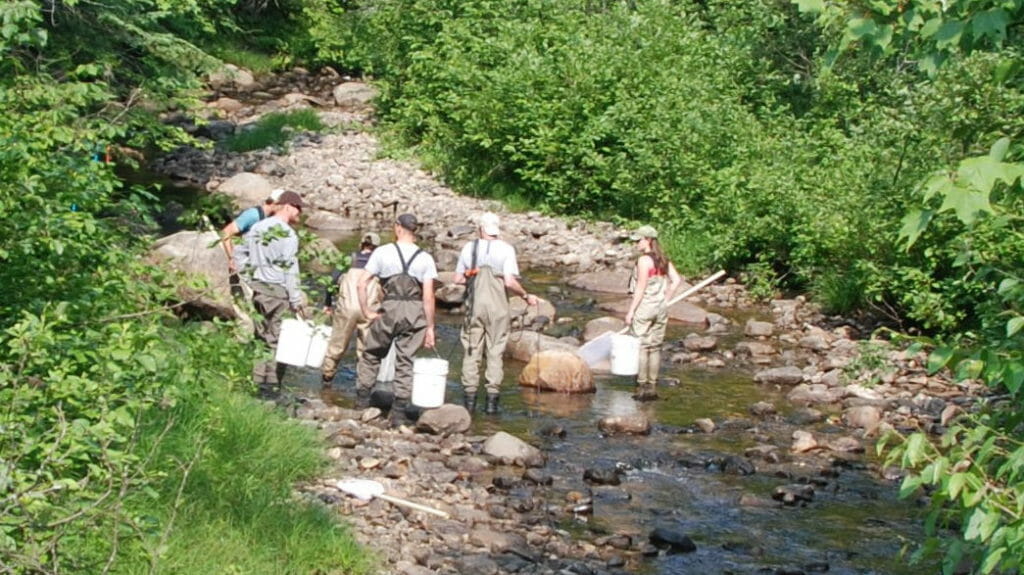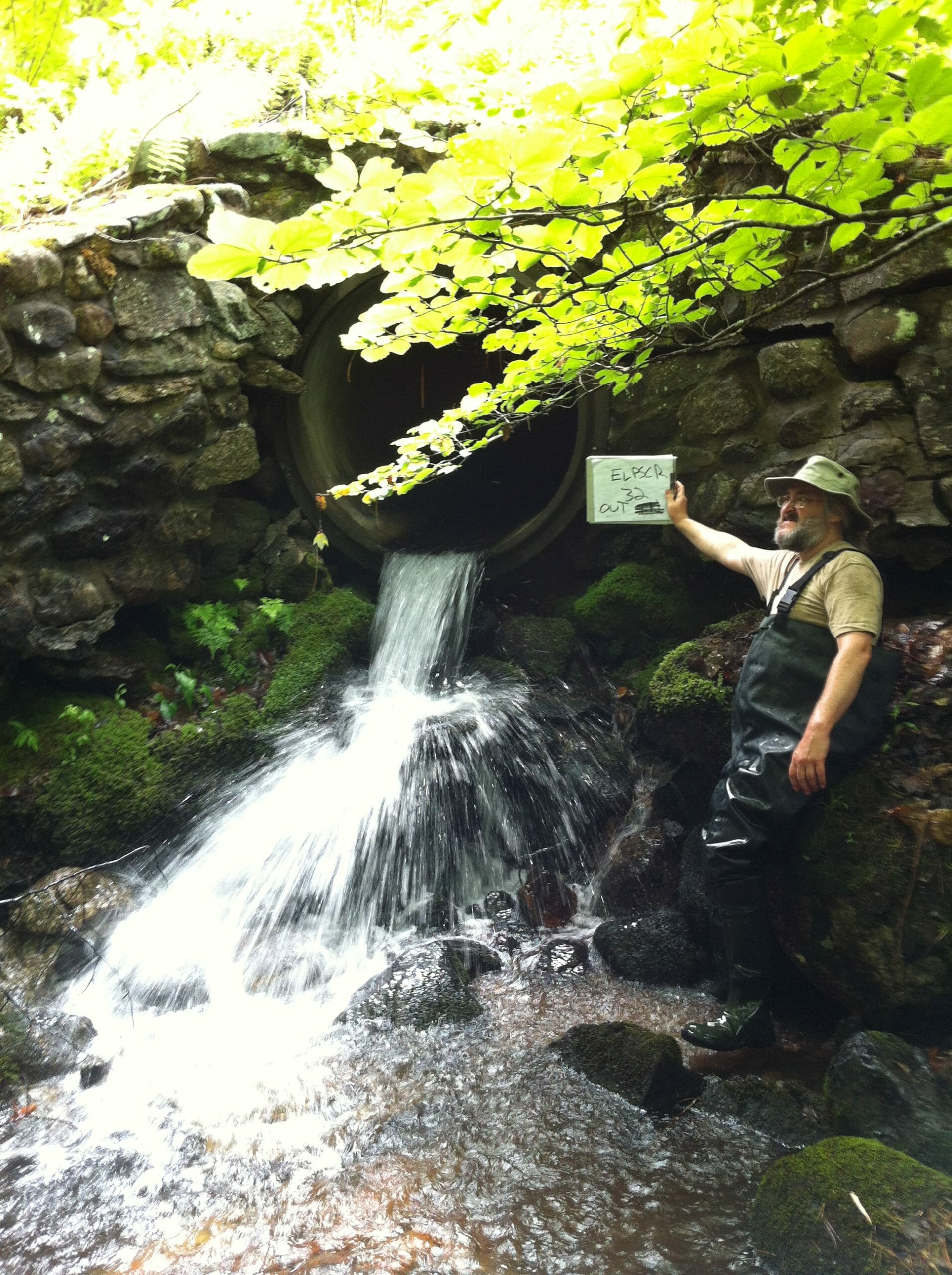By Keith Curley
I left New Hampshire 16 years ago to come work for TU in Arlington, Va., but often return home to visit family and reconnect with the rivers, lakes and streams where I learned to fish.
On one recent trip I had the good fortune of joining TU’s New Hampshire State Council for their monthly meeting, learning more about the hard work they’re doing around the state to advance TU’s mission.
From land protection to habitat reconnection to youth education and cutting-edge brook trout science, TU chapters are forming strong partnerships and getting things done. Since I know my fellow Granite Staters are more interested in doing the work than talking about it, I’ll take this opportunity to toot their horn.
TU’s conservation framework entails the protection of intact habitat, reconnection of habitat that is fragmented by dams or impassible culverts, and restoration of habitat that has been degraded. The planning and implementation of this conservation approach is grounded in science, including landscape-scale decision-support tools for brook trout, watershed-scale analyses of fish passage barriers, and instream habitat assessments to inform restoration strategies.
In order to sustain the conservation movement in the future, TU also works to educate the next generation of environmental stewards.
Protection and reconnection
TU in New Hampshire has a long tradition of land protection, often completed in concert with our close partner the Society for Protection of New Hampshire Forests. Past projects have included acquisition of the Washburn Forest parcel on the Connecticut River and the Black Mountain Forest on Mount Kearsarge.
The latest partnership project with the Society for Protection of New Hampshire Forests is a 257-acre parcel in Bethlehem, N.H., that includes 1.8 miles of the Ammonoosuc River and seven tributaries, among them Haystack Brook, a thermal refuge and prime spawning tributary. TU is helping to raise $565,000 by January 2020 to enable the purchase of this property, which will protect it in perpetuity and provide public access. To support this project visit https://forestsociety.org/project/ammonoosuc.

Reconnecting fragmented habitat is another key conservation strategy in New Hampshire. Large blocks of interconnected brook trout habitat are more resilient over time. Whether it’s long distance movement of brook trout in systems like the Dead Diamond River or more localized movements to or from tributaries for spawning and rearing habitat or seasonal thermal refuge, brook trout often move about the watershed to meet their habitat and life history needs.
In recent years TU has worked with partners to reconnect dozens of miles of previously fragmented stream habitat. TU chapters have advanced these efforts through culvert assessments, contributing matching donations that lead to additional grant funding, doing outreach to partners in their communities, and monitoring fish movement through electro-fishing and pit-tag telemetry studies.
One shining example comes from the Warner River watershed, where the Basil Woods Chapter worked with the New Hampshire Fish and Game Department on a comprehensive analysis of fish passage barriers. By understanding the location of all barriers in the watershed, we can prioritize the most impactful projects.
High water threats
As communities grapple with increased flooding that threatens their road infrastructure, these analyses also provide an opportunity to evaluate the risk of culvert washouts and determine where we can simultaneously benefit trout habitat and infrastructure resiliency. The Warner River project was so successful in galvanizing community awareness and support for the coldwater resources that the stream became a “Designated River” under the state’s River Management and Protection Program.
Similar projects are underway throughout the state, including the Ammonoosuc, Androscoggin, Piscataquog and Beebe river watersheds.
One of my early trout fishing experiences was on Nash Stream. I later learned that Nash Stream looked the way it did because of a catastrophic dam failure that washed out instream and riparian habitat for miles below the former impoundment.

TU has worked for more than 15 years to bring instream large wood back to the stream, restoring habitat complexity for brook trout and boosting native populations. The instream habitat provided by large wood has demonstrated benefits for brook trout, including a study from just over the border in Vermont that showed an average 150% increase in brook trout biomass where woody habitat has been added. In the past two years, TU has enhanced almost 7 miles of brook trout habitat in New Hampshire through wood addition projects.
Following the science
TU is working with partners across the state to advance brook trout science. This partnership has allowed TU to synthesize agency data to produce a brook trout “Portfolio” analysis to help guide strategic conservation initiatives. The Ammonoosuc Chapter obtained an Embrace A Stream grant to work with Dartmouth College and the New Hampshire Fish and Game Department on an innovative study of the movement of young-of-year brook trout to better understand rearing habitat needs.
The Embrace A Stream grant qualified the project for a national crowd-funding competition and attracted the greatest amount of donations of any project in the country thanks in large part to the outpouring of support from 11 TU chapters and councils across the Northeast and a match from Orvis.
TU is now looking to leverage citizen science tools like the RIVERS app to gather valuable data that helps inform future conservation strategies for aquatic species.
The next generation
In order to sustain and build upon these conservation gains in the future, it is essential that we educate the next generation of watershed stewards. The Council and Chapters in New Hampshire have excelled on this front, organizing a long-running Trout Camp that has provided hands-on educational opportunities for hundreds of youth over the years.

TU now runs the camp using a three-tier system, with one location and program tailored to an introductory level, a second tier for experienced young angler-conservationists, and a third tier where “graduates” serve as mentors for incoming camp participants. Through these efforts, TU is creating a pipeline of future conservation leaders in New Hampshire.
It’s not just my home-state pride speaking when I say that New Hampshire has some outstanding coldwater resources, from the large migratory brook trout in the Dead Diamond-Magalloway system, to the Upper Connecticut and its many tributaries, to the frigid high-elevation White Mountain National Forest trout streams, and beyond. I am glad to know that so many dedicated volunteers are doing the hard work to collaborate and build partnerships that advance our mission in the Granite State.
Keith Curley is Trout Unlimited’s vice president for eastern conservation.



